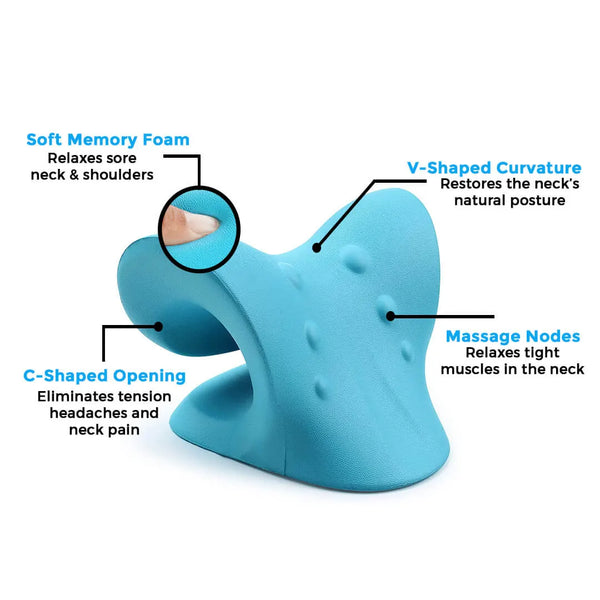Neck Pain in the Office: Determining Risk Variables and Implementing Ergonomic Solutions
Neck discomfort in the office is a widespread issue that can affect employee wellness and productivity. By understanding the numerous danger factors adding to neck discomfort and executing ergonomic services, organizations can produce a much more favorable work setting.
Common Sources Of Neck Pain
Neck pain in the office is a common issue that can be associated to several typical reasons. One of the main perpetrators is inadequate stance, which frequently results from extended durations of sitting improperly at a workdesk or workstation. This can lead to stress on the neck muscle mass and joints, causing discomfort and pain. In addition, repetitive activities such as frequent flexing, turning, or getting to can likewise contribute to neck discomfort over time. Stressing the neck by holding it in an awkward setting for extensive durations, like cradling the phone between the ear and shoulder, can exacerbate the issue (neck cloud).

Ergonomic Risk Aspects
Poor ergonomics in the office can substantially add to neck discomfort amongst employees. Aspects such as incorrect workdesk height, insufficient chair support, and unpleasant positioning of computer system screens can all play a function in the advancement of neck discomfort. When workers are compelled to rest for prolonged periods ready that strain their neck muscle mass, it can cause stiffness, discomfort, and a lot more serious musculoskeletal problems with time.
Additionally, inadequate ergonomic practices can lead to staff members embracing uncomfortable poses while functioning, such as craning their necks to see a computer screen or getting to annoyingly for a computer mouse or keyboard. neck cloud. These abnormal placements and recurring motions can put unnecessary anxiety on the neck and bordering muscular tissues, causing pain and lowered productivity

Desk Setup Recommendations
When establishing a desk in the workplace, it is important to take note of the comfort designs of the setting. To reduce the danger of neck discomfort and pain, there are numerous desk setup recommendations that staff members must take into consideration. To start with, make certain that the computer screen is positioned at eye level to stop straining the neck by seeking out or down. The key-board and computer mouse ought to be put at an elevation where the arm joints are bent at a 90-degree angle web link to advertise appropriate wrist placement. In addition, the chair elevation ought to allow the feet to rest level on the floor link with upper legs alongside the ground.
It is additionally essential to have sufficient lighting to reduce eye strain, as squinting or leaning forward can bring about neck tension. Arrange the desk layout to maintain regularly utilized things within arm's reach, limiting the demand for repeated turning or getting to activities. By executing these desk setup suggestions, employees can develop an extra ergonomic workspace that sustains neck wellness and minimizes the threat of establishing occupational neck pain.
Extending and Workout Tips
To preserve adaptability and reduce muscle stress in the work environment, including stretching and exercise routines can be helpful for general health and efficiency. Straightforward desk-friendly stretches can help relieve neck discomfort and avoid tightness. Neck rolls, shoulder shrugs, and mild side-to-side neck stretches are efficient in easing tension. In addition, including exercises like chin tucks, shoulder blade presses, and upper back stretches can help strengthen muscles that sustain great pose.
It is vital great post to read to take short breaks throughout the day to do these exercises. Establishing tips or making use of applications that prompt movement can help develop a regular extending routine. It is necessary to listen to your body and prevent overstretching, specifically if you are new to these exercises. Consistency is vital, so aim to include stretching and exercise into your everyday work regimen. By prioritizing these tasks, you can enhance your physical health, reduce the risk of neck discomfort, and enhance your total performance in the workplace.
Significance of Normal Breaks
In a fast-paced job environment where demands can contribute to physical pressures like neck discomfort, establishing a regimen that stresses the value of normal breaks is vital. By including short breaks into the work regular, staff members can decrease the risk of establishing neck pain and boost general comfort and efficiency.
These breaks can also serve as a chance for workers to practice relaxation methods or gentle neck stretches, better advertising bone and joint health. Carrying out a society that values and prioritizes routine breaks can have a substantial effect on reducing neck discomfort and boosting overall health in the work environment.
Final Thought
To conclude, addressing ergonomic threat variables and implementing proper workstation arrangements are crucial in minimizing neck discomfort in the workplace. By promoting good stance, providing adequate assistance, and motivating regular breaks and stretches, companies can create a much healthier and much more effective workplace for workers. Focusing on worker well-being with ergonomic options is vital to stop pain and improving general work environment fulfillment.
Neck discomfort in the workplace is a prevalent issue that can affect staff member well-being and productivity. By identifying and addressing these usual causes of neck pain in the work environment, employers can take positive actions to develop a more comfortable and ergonomic work atmosphere for their staff members.
Poor ergonomics in the workplace can substantially add to neck discomfort among employees. By executing these desk arrangement referrals, employees can create a more ergonomic workspace that supports neck health and wellness and reduces the threat of developing job-related neck pain.
Neck rolls, shoulder shrugs, and gentle side-to-side neck stretches are efficient in alleviating stress.